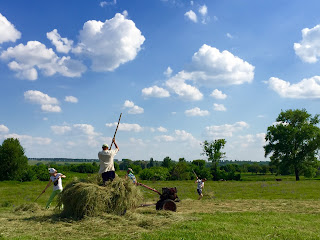Next week we will be driving across Ukraine and Russia assessing the current wheat harvest and adjusting our forecast if necessary.
At the same time, we will look at the condition of the spring planted crops, in particular, corn, to see how they are holding up so far and adjusting our forecasts there if required.
We will tour again in August to update our view on corn, sunflower and soya ahead of harvest.
During each tour we will post pictures, video and commentary on our dedicated tour Twitter account and follow up with a report of our findings including our latest yield forecasts.
We charge a reasonable £350 for this service which takes us through to the end of the year when we finish off the season with a final look at wheat to check out how well it has established and how it will stand up during the winter.
It’s a bit like having your own guy on the ground but at a mere fraction of the cost and you don’t have to fill out a risk assessment.
Drop me an email if you think this is something that might be of interest to you.
blackseacroptour@gmail.com





























